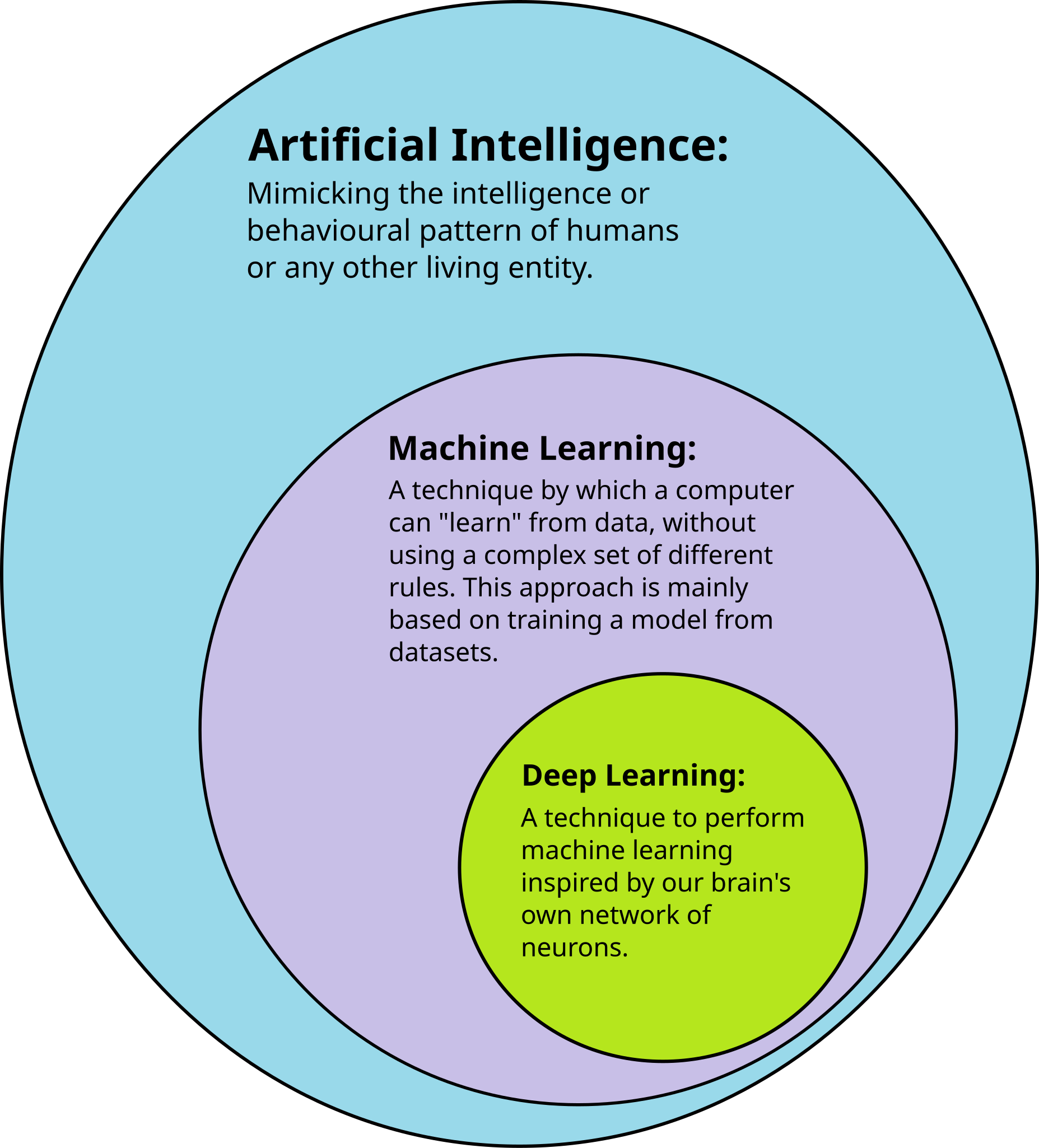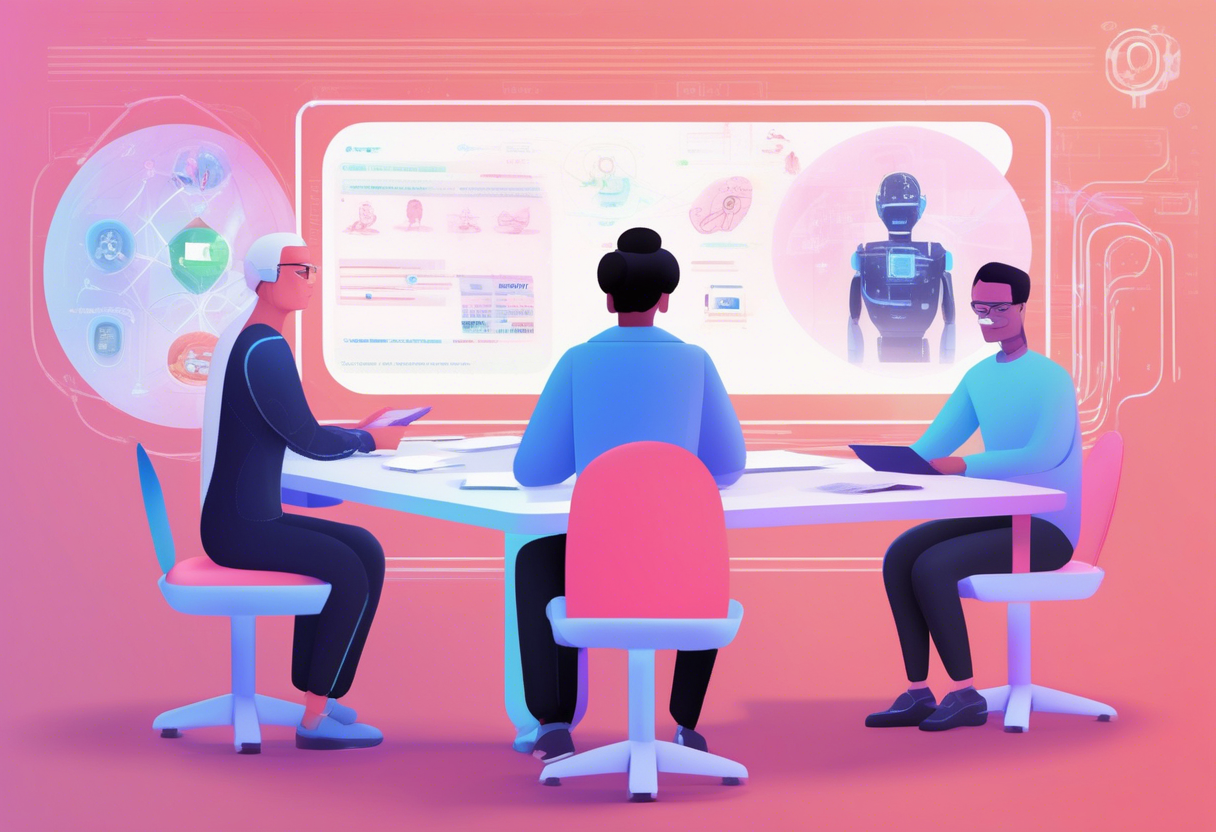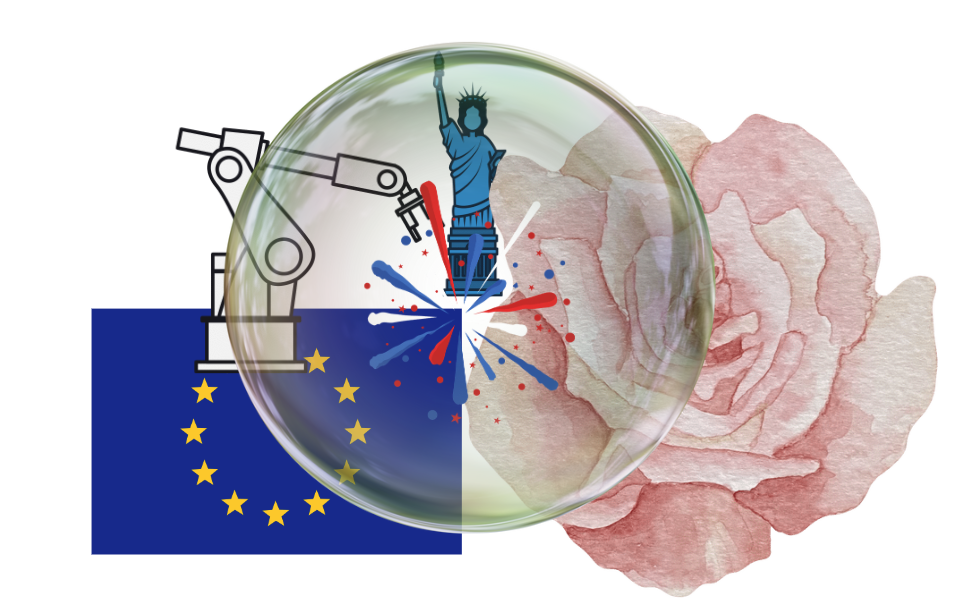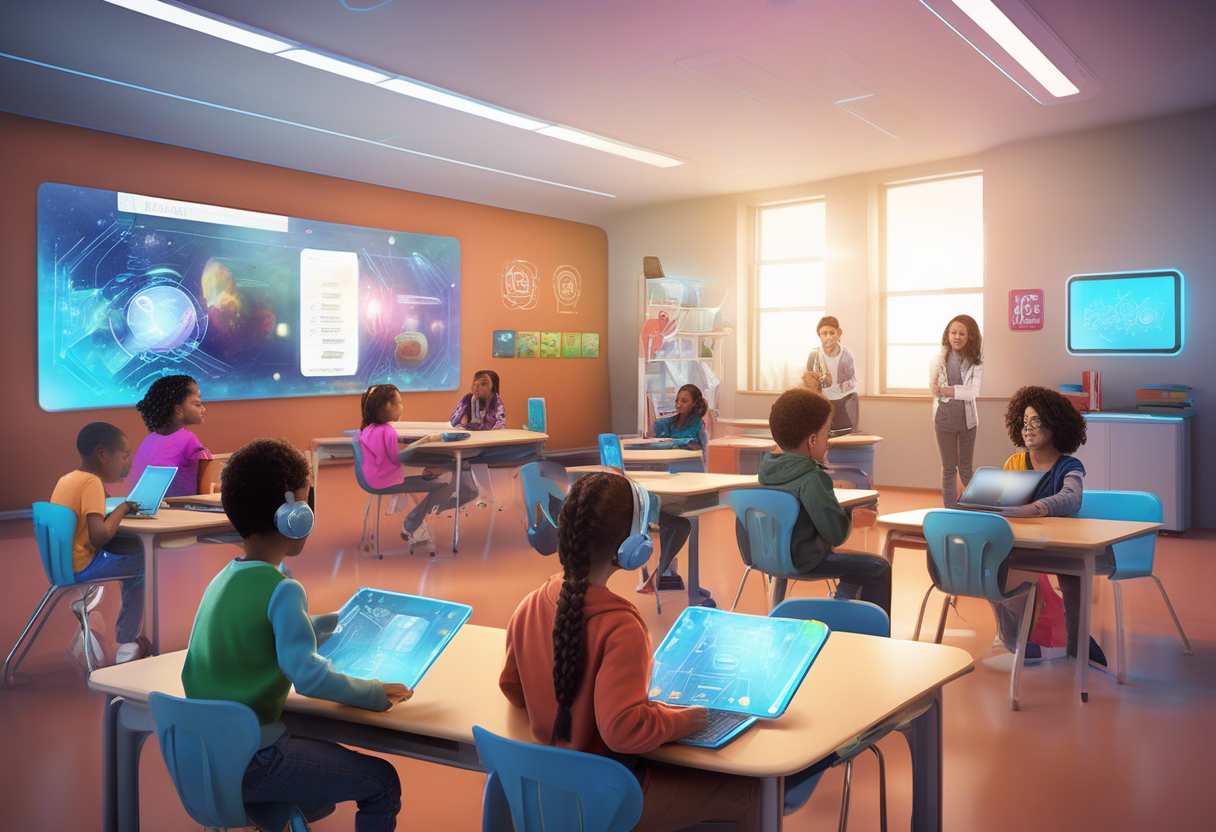
In a world where businesses are always changing, training and developing your team is more important than ever. Companies that put effort into solid training programs make 218% more income per employee than those that don’t. That's a big deal, showing just how crucial it is to keep up in the business world. Now, let's talk about AI in training and development. It's not just a trendy term—it's actually reshaping how we learn and grow at work.
AI is breaking down the old barriers of traditional training. It offers personalized and adaptive learning, making training more efficient and scalable. We'll look at how AI uses predictive analytics and the exciting ways humans and AI can work together. We'll also touch on the ethical side and fairness in AI-driven training, with real examples to show how it all plays out.
Whether you're a business leader, an HR pro, or just curious about where learning is headed, let's explore how AI is changing workforce development.
Summary: This article discusses the integration of AI in workforce training, highlighting the limitations of traditional methods and the benefits of AI-driven personalization, scalability, and predictive analytics. It also explores the ethical considerations and industry-specific applications of AI in enhancing workforce development.
The Limitations of Traditional Workforce Training
Challenges of Conventional Training Methods
Traditional training methods often attempt to fit everyone into the same mold, overlooking the diversity among employees. This one-size-fits-all approach limits their effectiveness. These methods are slow to adapt to the rapidly changing business landscape, rendering them less useful in today's fast-paced work environment.
Many conventional programs emphasize adherence to processes over achieving measurable results, making it difficult to assess their value. They tend to focus narrowly on individual performance rather than considering broader workplace systems, leading to short-term gains that don't endure.
These methods are typically rigid and standardized, lacking the personalization required to accommodate different learning styles and employee needs. As a result, training can become dull and uninspiring, leading to disengagement and poor learning outcomes. Furthermore, traditional assessments often rely heavily on memorization and standardized tests, which fail to demonstrate the practical application of skills in real-world scenarios.
Modernizing Workforce Training with AI
Today's workforce training requires a more personalized approach to accommodate various learning styles and individual needs. Leveraging AI and digital tools can help organizations stay abreast of rapid business changes while providing data-driven insights to enhance learning outcomes.
AI-driven training platforms offer adaptive learning experiences by adjusting content based on employee performance and engagement. Transitioning from static skills lists to real-time skills management systems enables organizations to maintain accurate talent data. Modern training emphasizes measurable results and continuous feedback, improving both ROI and employee development.
By utilizing AI and eLearning platforms, organizations can increase engagement through flexible, on-demand training solutions that are ideal for hybrid and remote work environments.
AI-Driven Personalization in Training and Development
Personalized Learning Paths with AI
AI-driven learning platforms are revolutionizing education by tailoring experiences to individual needs. These platforms analyze your past performance, preferences, and learning pace to create personalized learning paths. Notable platforms such as DreamBox, Khan Academy, and Smart Sparrow adjust content difficulty based on your progress.
This level of personalization allows you to:
- Quickly navigate through familiar topics.
- Spend more time on areas needing improvement.
- Stay engaged with tailored content.
Moreover, these platforms accommodate various learning styles and accelerate the learning process by concentrating on areas that require attention.
AI-Powered Adaptive Learning Technologies
AI in adaptive learning leverages predictive analytics to identify potential challenges before they become obstacles. These systems process vast amounts of data to dynamically adjust lessons, enhancing both efficiency and scalability.
Key tools include:
- Homework helpers
- Smart quizzes
- Language apps
These tools provide immediate feedback to address knowledge gaps. While AI enhances personalization and efficiency, experts advocate for AI to manage routine tasks, enabling educators to focus on mentoring and fostering creativity and emotional intelligence.

Emerging technologies, such as generative AI like ChatGPT, pave the way for hybrid learning models that blend AI with teacher guidance, aligning with contemporary educational goals.
Scalability and Efficiency in AI-Powered Training
AI in Training Large and Diverse Workforces
AI is revolutionizing how large organizations train their global workforce. These AI-driven programs efficiently manage vast amounts of data, enabling the simultaneous training of thousands of employees. This ensures consistent training across all locations, regardless of where employees are based.
AI personalizes the learning experience by analyzing individual learning styles, strengths, and preferences. This customization ensures that each employee receives training tailored to their needs. With AI-powered platforms, learning paths dynamically adjust as employees progress, maintaining engagement and facilitating skill development.
Moreover, AI enhances the accessibility of training programs. Whether employees are non-native speakers, working remotely, or have disabilities, AI ensures equitable learning opportunities. Additionally, AI provides real-time feedback on performance, allowing leaders to refine training strategies effectively.
Automating Routine Training Tasks with AI
AI streamlines numerous routine tasks within learning and development (L&D), such as content curation, assessment management, and administrative duties. This automation allows L&D teams to concentrate on strategic objectives. By reducing training time and costs, AI makes programs more affordable and scalable.
With AI tools, employees can learn at their own pace, keeping their skills updated without requiring constant assistance. By automating mundane tasks, AI enhances engagement and productivity, empowering employees to focus on significant work and personal growth.
Predictive Analytics in Workforce Development
Identifying Skill Gaps with AI
Predictive analytics plays a crucial role in identifying skill gaps by analyzing industry trends, employee performance, and training outcomes. This proactive approach enables companies to anticipate the skills they will need in the future. For example, predictive models can assess which skills—such as cloud infrastructure or AI/ML expertise—will be required by examining project plans and emerging technologies.

By leveraging these insights, companies can recommend personalized training that aligns with both individual and organizational needs. Additionally, clustering algorithms can categorize employees based on their skill gaps and suggest specific certifications or mentorship opportunities to align their skills with company objectives.
By utilizing both current and historical data, predictive workforce analytics can forecast future skill requirements. This approach enhances workforce development by making it more adaptable, moving beyond the limitations of relying solely on historical data.
Data-Driven Decision Making with AI
Predictive analytics empowers companies to make informed decisions by forecasting future staffing requirements, identifying turnover risks, and optimizing talent management using both past and present data. For instance, predictive models can anticipate potential employee departures by analyzing factors such as tenure or promotion history. This foresight allows HR to address retention challenges proactively with targeted training or compensation adjustments.

Moreover, predictive analytics enhances the recruitment process by estimating metrics like time-to-hire and cost-per-hire, enabling HR to allocate resources more efficiently. Detecting early signs of employee disengagement through shifts in behavior or performance supports HR in crafting customized retention strategies, ultimately increasing job satisfaction and reducing turnover.
For further reading, explore these resources:
- Predictive analytics in HR
- How predictive analytics improves workforce planning
- AI in learning and development
AI in Workforce Training: Human-AI Collaboration
Enhancing Human Trainers with AI
AI is transforming workforce training by taking on repetitive and data-intensive tasks. This shift allows human trainers to concentrate on creativity, problem-solving, and personal connections. The aim isn't to replace trainers but to enhance their capabilities through collaboration with AI.
For example, AI-powered learning tools can analyze individual learning patterns and recommend tailored courses. This personalization enables trainers to deliver more targeted and effective training.

However, for this synergy to succeed, organizations must adopt a new mindset. They need to view AI as a collaborative partner and equip their teams to effectively utilize these tools. In this context, reskilling and upskilling become crucial. Training programs now include new competencies such as data literacy, AI tool management, and digital problem-solving.
Emotional Intelligence and AI-Enhanced Mentorship
Human trainers excel in providing emotional intelligence, mentorship, and support—areas where AI falls short. This human touch is vital for cultivating a satisfied and productive workforce. When humans and AI collaborate in training, job roles and workflows require some redesign.
AI should handle routine tasks, allowing humans to focus on mentoring, creativity, and strategic thinking. Human mentors play a critical role in fostering persistence, resilience, and grit, encouraging continuous learning and growth in an AI-enhanced environment.

In this setting, AI can offer data-driven feedback on learner progress, while human mentors assist employees in overcoming challenges and building emotional resilience. This creates a comprehensive and supportive learning atmosphere.
Ethical and Equity Considerations in AI-Driven Training
Tackling Bias and Privacy in AI Training
When incorporating AI into learning and development, fairness and transparency are essential. These principles not only build trust but also safeguard employee data. To achieve this, it's crucial to be upfront about how AI personalizes learning and utilizes performance data. This transparency boosts employee confidence.
Companies should:
- Collect only necessary learning data.
- Adhere to regulations like GDPR and the US Privacy Act to protect personal information.
AI guidelines emphasize fairness to prevent biases in algorithms that could lead to unfair outcomes in training. Regular checks and updates of AI systems are necessary to maintain ethical standards and avoid unintended harm.

Imagine a company using AI for training: They clearly explain their data usage, gather only essential information, and routinely review AI outputs to ensure fairness and eliminate bias.
Promoting Ethical AI in Training Programs
Integrating AI into learning programs responsibly requires ensuring that these systems are inclusive, transparent, fair, and secure. Collaborating with AI vendors who prioritize ethics—such as transparency and data privacy—is crucial.
Ethical AI in education should focus on:
- Doing good
- Fairness
- Respecting autonomy
- Being clear and accountable
- Protecting privacy
- Avoiding discrimination
- Weighing risks and benefits
Ensuring that everyone, regardless of their background, has access to AI resources promotes equality in training. Additionally, offering AI ethics training to employees fosters an environment that supports growth, protects rights, and promotes fairness.

For example, a company might:
- Offer AI ethics training.
- Partner with ethical vendors.
- Ensure all employees, irrespective of their background, can access AI learning tools.
AI in Training: Industry-Specific Case Studies
AI Transforming Healthcare Training
AI is revolutionizing the healthcare sector by enhancing training and improving patient outcomes. With AI-driven personalized learning platforms, training is undergoing a transformation. These platforms tailor content to meet the specific needs of each healthcare professional, enabling them to acquire skills more rapidly and stay current with the latest procedures and technologies.

For instance, AI has significantly reduced the time required to onboard new staff and decreased surgical errors, resulting in more efficient healthcare delivery. These AI-powered platforms provide precise and adaptable training modules, essential for mastering complex medical tasks. Want to know more about AI's impact on healthcare training? Check it out here.
AI Enhancing Manufacturing Training
In the manufacturing industry, AI is enhancing production efficiency and promoting sustainability. ABB Ltd. exemplifies this by employing AI-enhanced robots to optimize production processes. These AI systems facilitate predictive maintenance, reducing downtime and ensuring smooth operations. Furthermore, AI-driven quality control maintains high production standards.
Thanks to AI, ABB has achieved a 15% reduction in energy consumption, aligning with sustainability objectives through improved energy management. These advancements illustrate how AI is transforming manufacturing training and operations. Curious about AI's role in manufacturing? Read more here.
AI in Defense Training Simulations
Although specific case studies are limited, AI's application in defense training is well-recognized. It plays a crucial role in simulation-based training, providing military personnel with realistic and controlled environments to hone their skills. These simulations enhance readiness by offering learning experiences that adapt to trainees' actions.
AI also aids in decision-making and operational preparation, equipping personnel for the complex situations they may encounter in real-life scenarios. While examples are scarce, AI's contribution to defense training is an integral component of modern military strategies.
These examples demonstrate how AI is transforming training and development across various sectors. By customizing learning experiences, streamlining operations, and reducing errors, AI is reshaping industry-specific training. Want to dive deeper into AI in learning and development? Check it out here.
FAQ Section
AI-Driven Simulations: Enhancing Knowledge Retention and Employee Confidence
AI-driven simulations provide employees with the opportunity to practice decision-making and problem-solving in a safe environment. This approach encourages critical thinking and builds confidence as employees can engage with realistic challenges without the fear of making mistakes.
Notably, training with AI videos concludes 20% faster than traditional methods, while maintaining recall efficacy comparable to sessions with real actors. This means AI simulations not only expedite the learning process but also enhance memory retention.
Additionally, AI virtual coaches and chatbots offer instant assistance and personalized feedback, making training more engaging and easier to comprehend. As a result, employees retain more information and gain confidence in their roles. For example, IBM’s virtual assistant, Watson, provides quick responses and learning tips, boosting engagement and fostering a seamless learning environment that enhances knowledge retention and confidence.
Challenges in Scaling AI-Powered Training Solutions
Scaling AI-powered training presents several challenges. A significant one is the resources and effort required to implement systems capable of accommodating a large number of employees simultaneously. Although AI can automate routine training tasks, finding the right balance between automation and human oversight remains complex.
Tailoring training at scale demands sophisticated AI models to address diverse employee needs, which can be difficult to develop and maintain. Furthermore, ensuring global accessibility of training materials is crucial. AI must translate content into multiple languages and maintain cultural relevance, necessitating continuous updates and quality checks.
IBM's use of Watson exemplifies how to address these challenges by employing AI virtual assistants for personalized training worldwide.
Personalizing Learning Experiences with AI for Diverse Employee Needs
AI personalizes learning by analyzing each employee’s performance, skills, and learning preferences. It customizes content to address individual needs, making training more relevant and effective.
AI chatbots and virtual tutors adjust the pace of learning and provide immediate assistance, allowing employees to learn at their convenience and receive the support they require. AI-driven assessments replace traditional evaluation methods by adapting to individual progress and offering instant feedback.

In practice, AI identifies specific skill gaps and efficiently focuses on addressing them. For instance, if a new marketing hire excels in social media but needs improvement in SEO, AI can tailor the learning experience to bridge that gap effectively.
For further reading on AI in learning and development, explore these resources: AI in learning and development, AI for training and development, AI in learning, AI in workforce training.